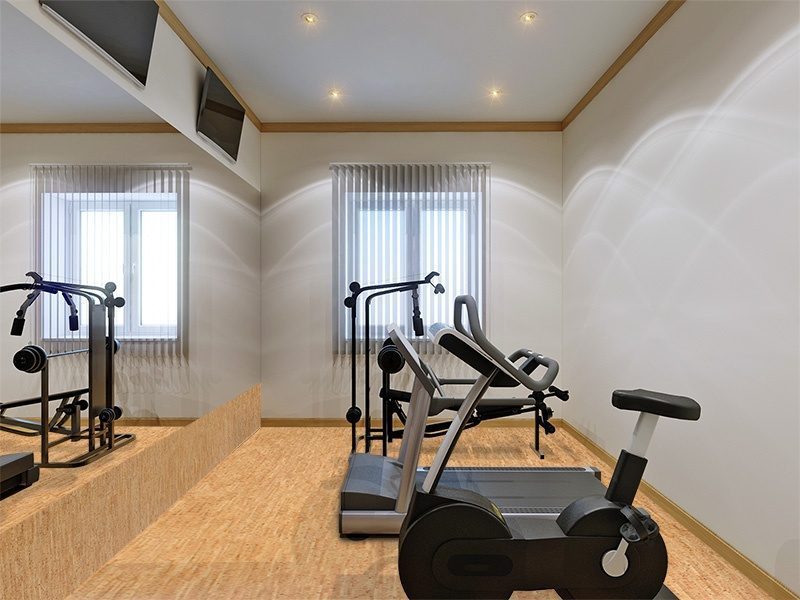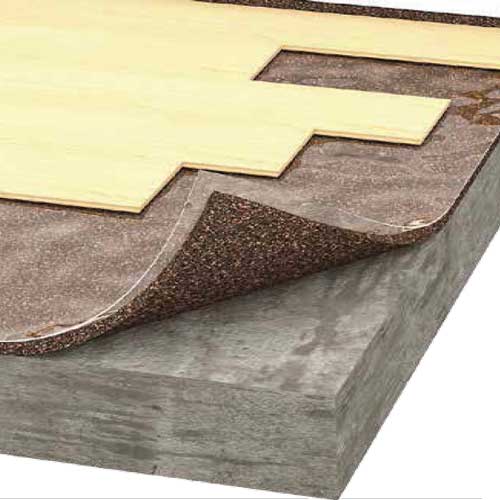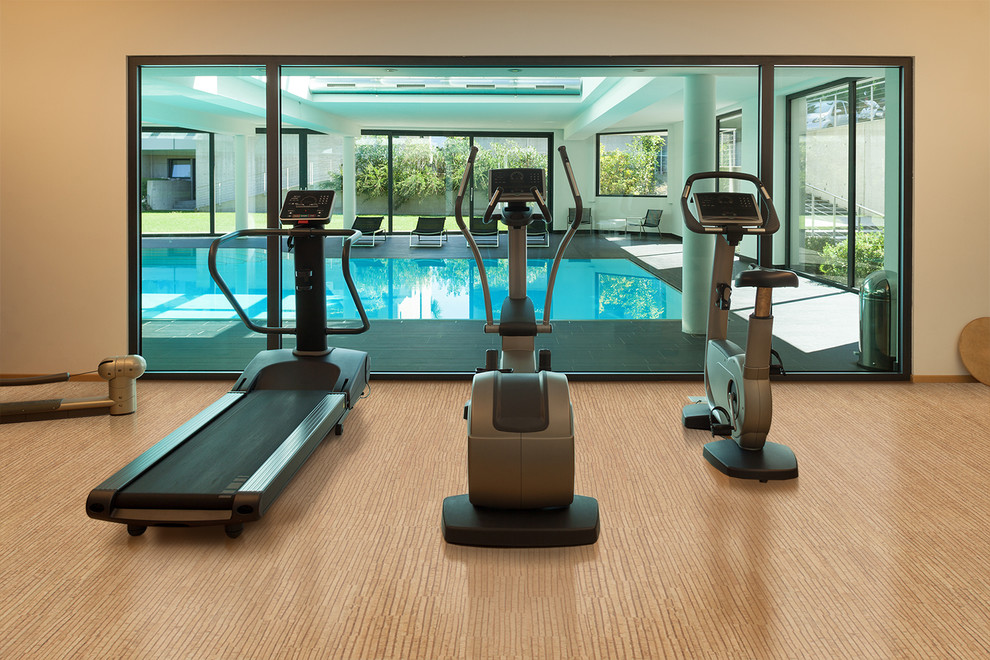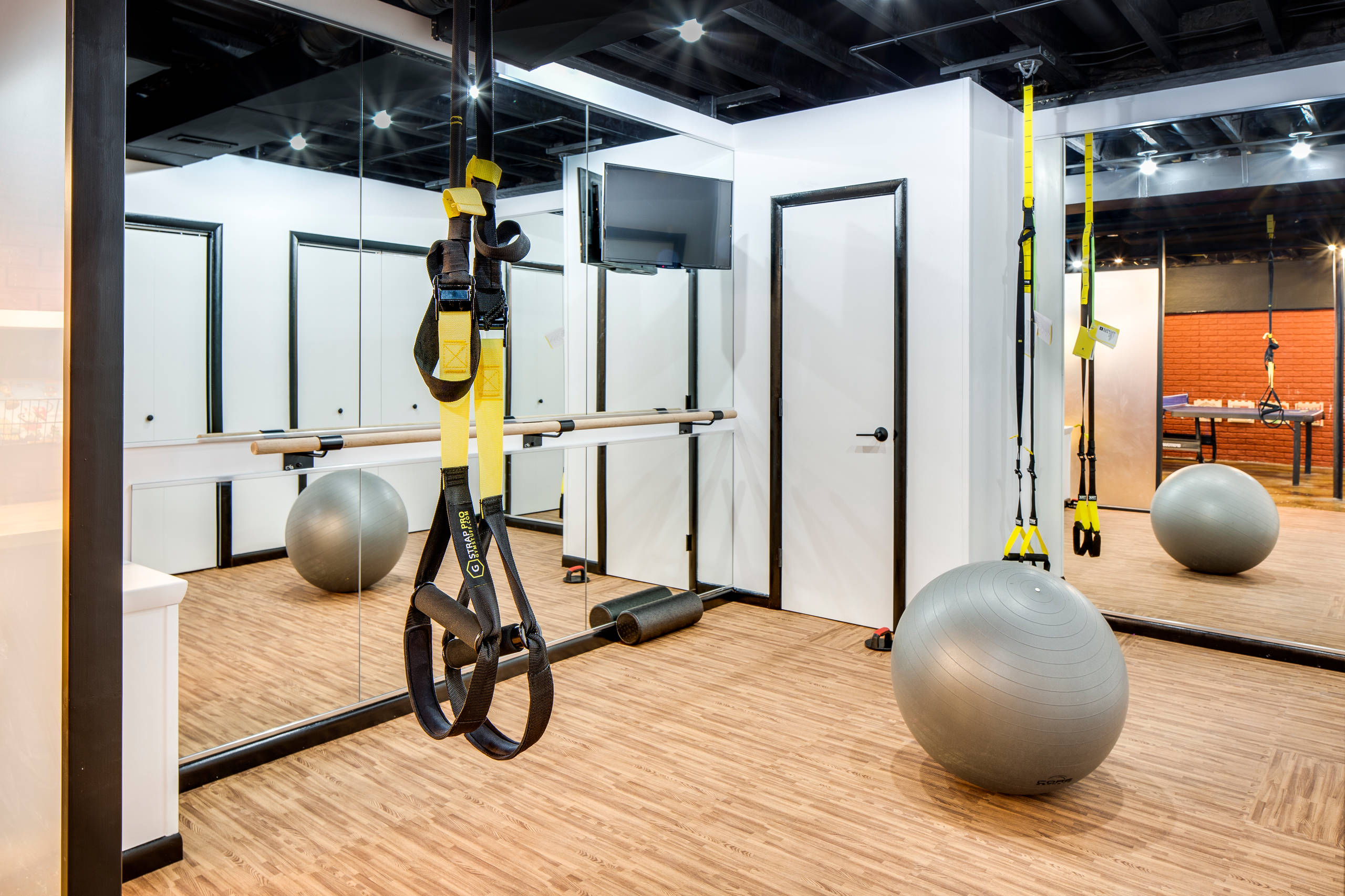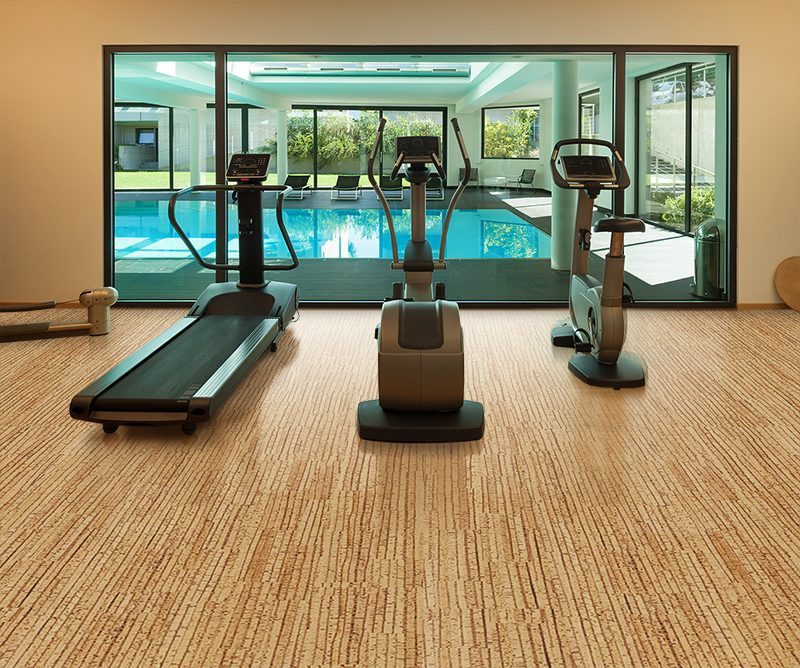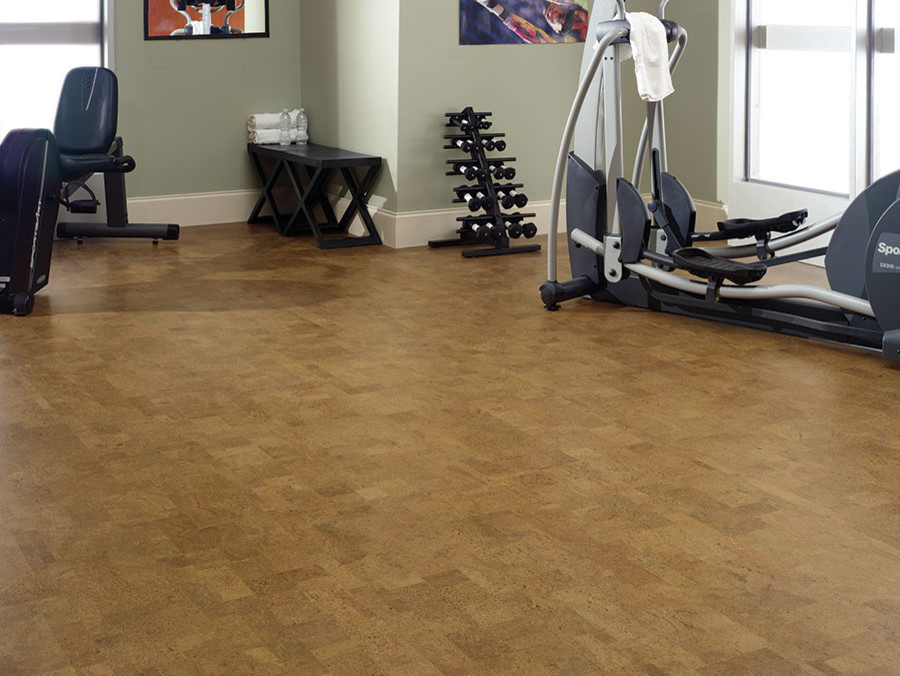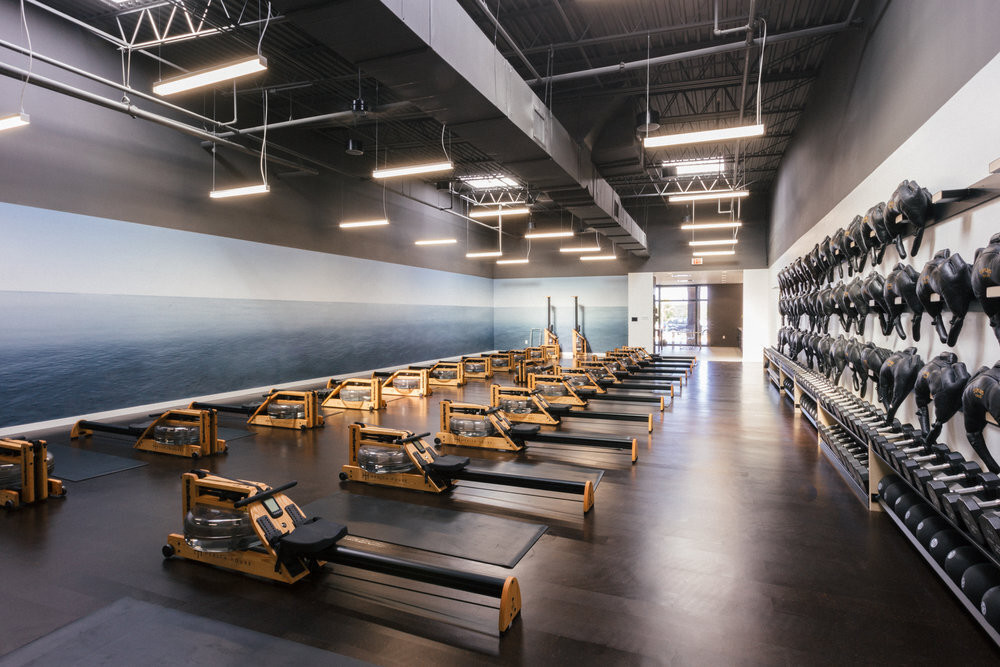The Benefits of Cork Gym Flooring
Cork gym flooring has gained popularity in recent years due to its numerous benefits for both home and commercial gym spaces. This natural and sustainable material offers a range of advantages that make it an excellent choice for gym flooring. Below are some of the key benefits of cork gym flooring:
- Eco-Friendly: One of the primary benefits of cork gym flooring is its eco-friendliness. Cork is a renewable resource harvested from the bark of cork oak trees, which regrow after harvesting, making it a sustainable and environmentally responsible flooring option. Choosing cork gym flooring helps reduce your environmental impact and supports sustainable forestry practices.
- Shock Absorption: Cork gym flooring provides excellent shock absorption, making it ideal for high-impact activities such as weightlifting, jumping, and aerobics. The natural elasticity of the cork allows it to compress and rebound, absorbing impact and reducing strain on joints, muscles, and ligaments. This helps prevent injuries and provides a comfortable and supportive surface for workouts.
- Durability: Despite its soft and cushioned feel, cork gym flooring is surprisingly durable and long-lasting. Cork is naturally resistant to wear and tear, scratches, and dents, making it suitable for heavy use in gym environments. Additionally, cork gym flooring is resistant to moisture, mold, and mildew, making it an excellent choice for areas prone to humidity or moisture buildup.
- Noise Reduction: Cork gym flooring helps reduce noise and impact sound, creating a quieter and more comfortable workout environment. The cellular structure of the cork absorbs sound vibrations, minimizing noise from equipment, footsteps, and dropped weights. This is especially beneficial for home gyms located in multi-story or shared living spaces, where noise reduction is important.
- Warmth and Comfort: Cork gym flooring provides a warm and comfortable surface for workouts, even in cold or drafty environments. Unlike hard flooring materials such as tile or concrete, cork retains heat and feels warm underfoot, making it more pleasant to exercise on barefoot or in socks. The natural cushioning of cork also adds comfort during workouts, reducing fatigue and strain on the body.
- Antimicrobial Properties: Cork gym flooring has natural antimicrobial properties that inhibit the growth of bacteria, mold, and mildew. This makes cork gym flooring hygienic and easy to clean, reducing the risk of bacterial or fungal infections in gym spaces. Additionally, cork is hypoallergenic and resistant to allergens, making it suitable for individuals with allergies or sensitivities.
- Aesthetic Appeal: In addition to its practical benefits, cork gym flooring offers a natural and attractive aesthetic that enhances the look of any gym space. Cork comes in a variety of colors and textures, ranging from light and neutral tones to darker and more dramatic shades. Whether you prefer a modern, minimalist look or a rustic, natural vibe, cork gym flooring can complement a wide range of design styles.
- Easy Installation: Cork gym flooring is relatively easy to install, making it a convenient option for DIY enthusiasts or professional installers. Cork tiles or planks can be glued down to a clean, level subfloor using adhesive, or installed as a floating floor with interlocking edges. This allows for quick and hassle-free installation, saving time and labor costs.
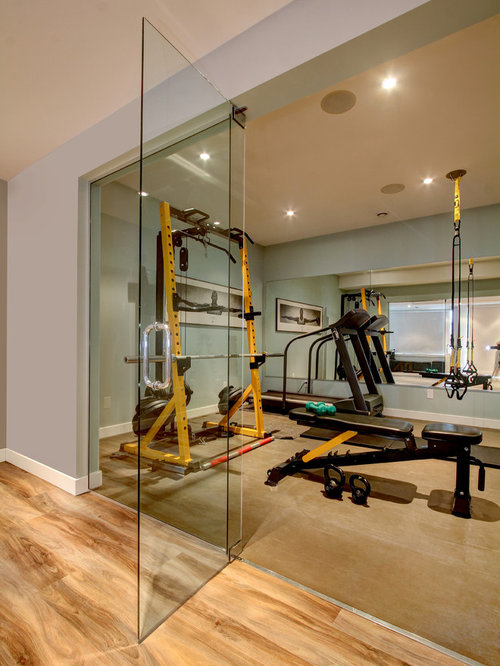
Choosing the Right Type of Cork Gym Flooring
When it comes to choosing cork gym flooring, there are several factors to consider to ensure you select the right type for your specific needs and preferences. From the type of cork to the thickness and finish, each element plays a crucial role in the performance and appearance of the flooring. Let’s learn how to choose the right type of cork gym flooring for your gym space:
Solid Cork Tiles: Solid cork tiles are made from compressed cork granules, providing a dense and durable flooring option for gyms. Solid cork tiles are available in various thicknesses, ranging from 6mm to 12mm or more, offering different levels of shock absorption and stability. Thicker tiles provide greater cushioning and support for high-impact activities, while thinner tiles are more suitable for low-impact workouts.
Cork Rubber Composite Tiles: Cork rubber composite tiles combine the natural cushioning of cork with the durability of rubber, offering a versatile and resilient flooring solution for gyms. These tiles feature a layer of cork on top of a rubber base, providing enhanced shock absorption, noise reduction, and durability. Cork rubber composite tiles are available in various thicknesses and textures, allowing for customization to suit different gym environments.
Cork Floating Floors: Cork floating floors consist of cork tiles or planks that are designed to interlock and float over the subfloor without the need for adhesive. This installation method allows for easy removal and replacement of individual tiles or planks, making it ideal for temporary or modular gym spaces. Cork floating floors provide excellent shock absorption, noise reduction, and thermal insulation, creating a comfortable and supportive surface for workouts.
Cork Roll Flooring: Cork roll flooring is a cost-effective and versatile option for gym spaces that require a seamless and continuous surface. Cork roll flooring is made from sheets of cork that are rolled out and installed over the subfloor, providing a smooth and uniform surface for workouts. This type of cork flooring is available in various thicknesses and can be cut to size to fit any gym space, making it a flexible and customizable option.
Prefinished vs. Unfinished Cork: Cork gym flooring is available in prefinished and unfinished options, each offering different benefits and considerations. Prefinished cork flooring comes with a factory-applied finish that provides protection against moisture, stains, and scratches, making it more durable and easier to maintain. Unfinished cork flooring, on the other hand, allows for on-site finishing and customization with sealants, stains, or coatings, providing greater control over the final appearance and performance of the flooring.
Texture and Finish: Consider the texture and finish of cork gym flooring when making your selection. Cork flooring is available in various textures and finishes, including smooth, textured, and distressed options. Smooth finishes are easy to clean and maintain, while textured or distressed finishes provide added traction and visual interest. Choose a texture and finish that complements the design style and functional requirements of your gym space.
Color and Design: Cork gym flooring comes in a variety of colors and designs to suit different design preferences and aesthetic preferences. From natural cork with subtle variations in tone and texture to colored cork with bold and vibrant hues, there are options available to match any gym decor. Consider the overall design theme and color palette of your gym space when choosing the color and design of cork gym flooring.
Budget and Maintenance: Finally, consider your budget and maintenance requirements when choosing cork gym flooring. Solid cork tiles and cork rubber composite tiles tend to be more expensive than cork floating floors or cork roll flooring, so factor in your budget constraints when making your selection. Additionally, consider the maintenance requirements of different types of cork flooring, as some may require more frequent cleaning or sealing than others.
Installation Tips for Cork Gym Flooring
Proper installation is crucial for ensuring the durability, performance, and longevity of cork gym flooring. Whether you’re installing solid cork tiles, cork rubber composite tiles, cork floating floors, or cork roll flooring, following the correct installation techniques is essential for achieving optimal results. Below are some installation tips for cork gym flooring to help you get the job done right:
Acclimation: Before installing cork gym flooring, allow the cork tiles, planks, or rolls to acclimate to the environment for at least 48 hours. This allows the cork flooring to adjust to the temperature and humidity levels of the space, minimizing the risk of expansion, contraction, or warping after installation.
Subfloor Preparation: Proper subfloor preparation is essential for ensuring a stable and long-lasting installation of cork gym flooring. Ensure that the subfloor is clean, dry, level, and free of any debris, dust, or contaminants. Repair any cracks, holes, or uneven areas in the subfloor using a suitable patching compound or filler, and ensure that the subfloor is properly waterproofed and moisture-resistant.
Moisture Barrier: Install a moisture barrier or vapor retarder over the subfloor before laying cork gym flooring, especially in areas prone to moisture or humidity. A moisture barrier helps prevent moisture from penetrating the subfloor and affecting the stability and performance of the cork flooring. Use a suitable moisture barrier recommended by the manufacturer and follow the installation instructions carefully.
Adhesive Application: When installing solid cork tiles or cork rubber composite tiles, use a high-quality adhesive recommended by the manufacturer. Apply the adhesive evenly to the subfloor using a trowel, ensuring full coverage and a uniform thickness. Follow the manufacturer’s instructions for mixing and applying the adhesive, and allow it to set to the appropriate tackiness before laying the cork tiles.
Interlocking Edges: If installing cork floating floors, ensure that the edges of the cork tiles or planks are properly interlocked to create a tight and secure fit. Use a tapping block and rubber mallet to gently tap the edges of the tiles or planks into place, ensuring a snug and seamless connection between each piece. Pay attention to the alignment and spacing of the tiles or planks to create a uniform and visually pleasing installation.
Expansion Gaps: Leave expansion gaps around the perimeter of the cork gym flooring to allow for natural expansion and contraction of the cork material. This is especially important for cork floating floors, as they require space to expand and contract with changes in temperature and humidity. Use spacers or shims to maintain consistent expansion gaps along the edges of the flooring, and fill the gaps with a flexible sealant or molding after installation.
Sealing and Finishing: Depending on the type of cork gym flooring you choose, sealing and finishing may be necessary to protect the surface and enhance its durability. Apply a suitable sealant or finish recommended by the manufacturer to the cork flooring after installation, following the manufacturer’s instructions for application and drying times. This helps seal the surface of the cork flooring and provides added protection against moisture, stains, and scratches.
Final Inspection: Once the cork gym flooring is installed, inspect the entire surface for any imperfections, gaps, or loose tiles. Make any necessary adjustments or repairs to ensure a smooth and seamless finish, and clean the surface of the flooring thoroughly to remove any adhesive residue, dust, or debris. Allow the cork flooring to acclimate and settle for at least 24 hours before allowing foot traffic or placing heavy equipment on the surface.
Maintenance and Care Guide
Proper maintenance and care are essential for preserving the beauty, durability, and performance of cork gym flooring. Whether you have solid cork tiles, cork rubber composite tiles, cork floating floors, or cork roll flooring, regular upkeep helps extend the lifespan of the flooring and ensures optimal performance for years to come. Follow this maintenance and care guide for cork gym flooring to help you keep it looking like new:
Daily Cleaning: Sweep or vacuum the cork gym flooring daily to remove dirt, dust, and debris that can scratch or damage the surface. Use a soft-bristled broom or vacuum with a brush attachment to gently sweep the floor, paying attention to corners, edges, and hard-to-reach areas. Avoid using abrasive brushes or harsh cleaning tools that can scratch or dull the surface of the cork flooring.
Damp Mopping: In addition to daily sweeping, damp mop the cork gym flooring regularly to remove any remaining dirt, grime, or stains. Use a pH-neutral cleaner diluted in water to mop the floor surface, ensuring that the mop is only slightly damp to avoid saturating the cork tiles. Avoid using excessive water or harsh cleaning agents, as these can damage the cork flooring and cause swelling or warping.
Spot Cleaning: Promptly clean up any spills or stains on the cork gym flooring to prevent them from setting or penetrating the surface. Blot up spills immediately with a clean, dry cloth or paper towel, and then clean the affected area with a mild detergent and water. Avoid using acidic or abrasive cleaners, as these can damage the cork and strip away its natural protective finish.
Avoid Standing Water: Cork gym flooring is resistant to moisture, but standing water should still be avoided to prevent damage to the surface. Wipe up any spills or water immediately with a clean, dry cloth or towel, and ensure that wet equipment or gym mats are not left on the cork flooring for extended periods. Additionally, use mats or rugs in areas prone to moisture buildup, such as entryways or near water fountains, to protect the cork flooring from water damage.
Regular Sealing: Depending on the type of cork gym flooring you have, periodic sealing may be necessary to protect the surface and maintain its appearance. Solid cork tiles and cork roll flooring may require periodic sealing with a suitable sealant or finish to protect against moisture, stains, and scratches. Follow the manufacturer’s recommendations for sealing frequency and application instructions to ensure optimal results.
Preventive Measures: Take preventive measures to protect the cork gym flooring from scratches, dents, and other damage. Place felt pads or furniture glides under heavy equipment or furniture legs to prevent scratching the floor when moving or rearranging items. Use gym mats or protective covers under exercise equipment to reduce impact and minimize wear and tear on the cork flooring.
Avoid Direct Sunlight: Direct sunlight can cause fading and discoloration of cork gym flooring over time, so it’s important to minimize exposure to UV rays. Use curtains, blinds, or window treatments to block out direct sunlight during peak hours, especially in areas with large windows or skylights. Additionally, consider using rugs or mats in areas exposed to sunlight to protect the cork flooring from UV damage.
Regular Inspections: Regularly inspect the cork gym flooring for any signs of damage, wear, or discoloration. Look for scratches, dents, or areas of uneven wear, and make any necessary repairs or adjustments to maintain the integrity of the flooring. Clean the surface of the cork flooring regularly to remove dirt, dust, and debris that can accumulate over time and dull the appearance of the flooring.
Design Options and Considerations
Cork gym flooring offers a range of design options and considerations to enhance the aesthetic appeal and functionality of your gym space. From color and texture to pattern and layout, cork gym flooring allows for endless customization possibilities to suit your design preferences and performance needs. Let’s explore some design options and considerations for cork gym flooring to help you create a stylish and functional workout environment:
Natural Cork: Natural cork gym flooring features the authentic look and texture of cork, showcasing its unique grain patterns and natural variations in color and tone. Natural cork flooring adds warmth and character to gym spaces, creating a welcoming and inviting atmosphere for workouts. Choose from light, medium, or dark shades of natural cork to complement your gym decor and design theme.
Colored Cork: Colored cork gym flooring offers a contemporary and vibrant alternative to natural cork, adding a pop of color and personality to gym spaces. Colored cork flooring is available in a wide range of hues and shades, from bold and bright colors to subtle and muted tones. Whether you prefer a monochromatic palette or a mix of complementary colors, colored cork flooring allows for endless design possibilities to express your style.
Texture and Finish: Consider the texture and finish of cork gym flooring to enhance its visual appeal and tactile experience. Cork flooring is available in various textures and finishes, including smooth, textured, and distressed options. Smooth finishes provide a sleek and modern look, while textured or distressed finishes add depth and character to the flooring. Choose a texture and finish that complements the design style and functional requirements of your gym space.
Pattern and Layout: Experiment with different patterns and layouts to create a dynamic and visually interesting design with cork gym flooring. Whether you prefer a classic checkerboard pattern, a modern herringbone layout, or a custom design with mixed patterns and shapes, cork flooring allows for endless creativity and customization. Consider the size and shape of your gym space, as well as the overall design theme, when choosing a pattern and layout for cork gym flooring.
Contrasting Borders and Accents: Add visual interest and dimension to cork gym flooring by incorporating contrasting borders and accents into the design. Use border tiles or accent strips in a different color or texture to frame the perimeter of the floor or create decorative borders around the edges of the room. Additionally, use accent tiles or patterns within the main field of cork flooring to create focal points or visual interest.
Mixed Materials and Finishes: Enhance the visual impact of cork gym flooring by mixing and matching different materials and finishes. Pair cork flooring with complementary materials such as wood, rubber, or vinyl to create interesting contrasts in texture and tone. Experiment with different finishes such as matte, gloss, or satin to add depth and dimension to the flooring. Mixing materials and finishes adds visual interest and sophistication to the overall design of the gym space.
Custom Logos and Graphics: Personalize cork gym flooring with custom logos, graphics, or branding elements to create a unique and memorable workout environment. Incorporate your gym logo, motivational quotes, or inspirational graphics into the cork flooring design to reflect your brand identity and enhance the ambiance of the space. Custom logos and graphics can be digitally printed or engraved onto cork tiles or planks for a custom and professional finish.
Functional Considerations: In addition to aesthetics, consider the functional requirements of cork gym flooring when designing your gym space. Choose a thickness and density of cork flooring that provides adequate shock absorption and support for your specific workout activities. Consider the maintenance and cleaning requirements of different types of cork flooring, as well as factors such as durability, moisture resistance, and ease of installation.
Cork Floor Home Gym Ideas
Gym Room Flooring Logan Forna 1/2″ (12mm) Cork Flooring Floating 6″x6″ Samples eBay
Cork Gym Flooring
US Floors Natural Cork Flooring – Contemporary – Home Gym
Globus Cork Eco-Friendly Flooring Brooklyn NY Cork flooring
Brown Cork Flooring Designer Gym Floor Tile, Thickness: 15-20 mm
Gym flooring selection: an eco gym designer perspective
The sustainability benefits of cork flooring Green Home Guide
Related Posts:
